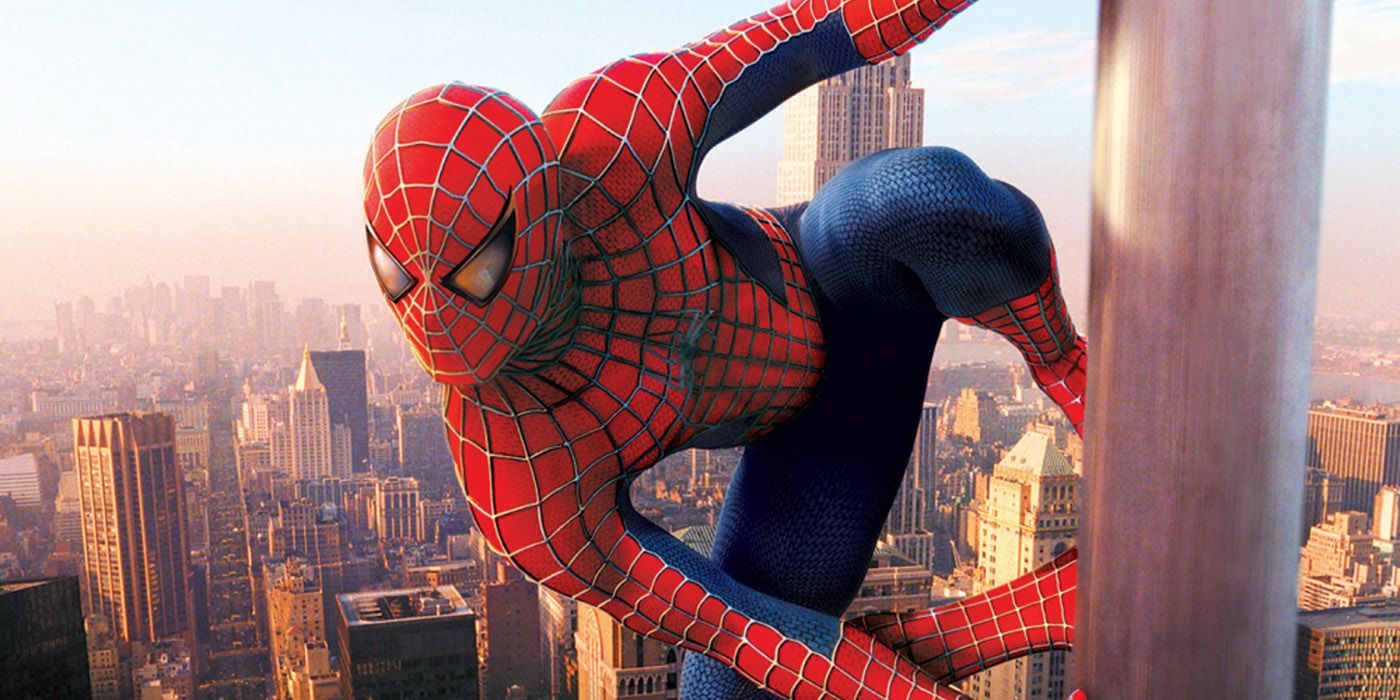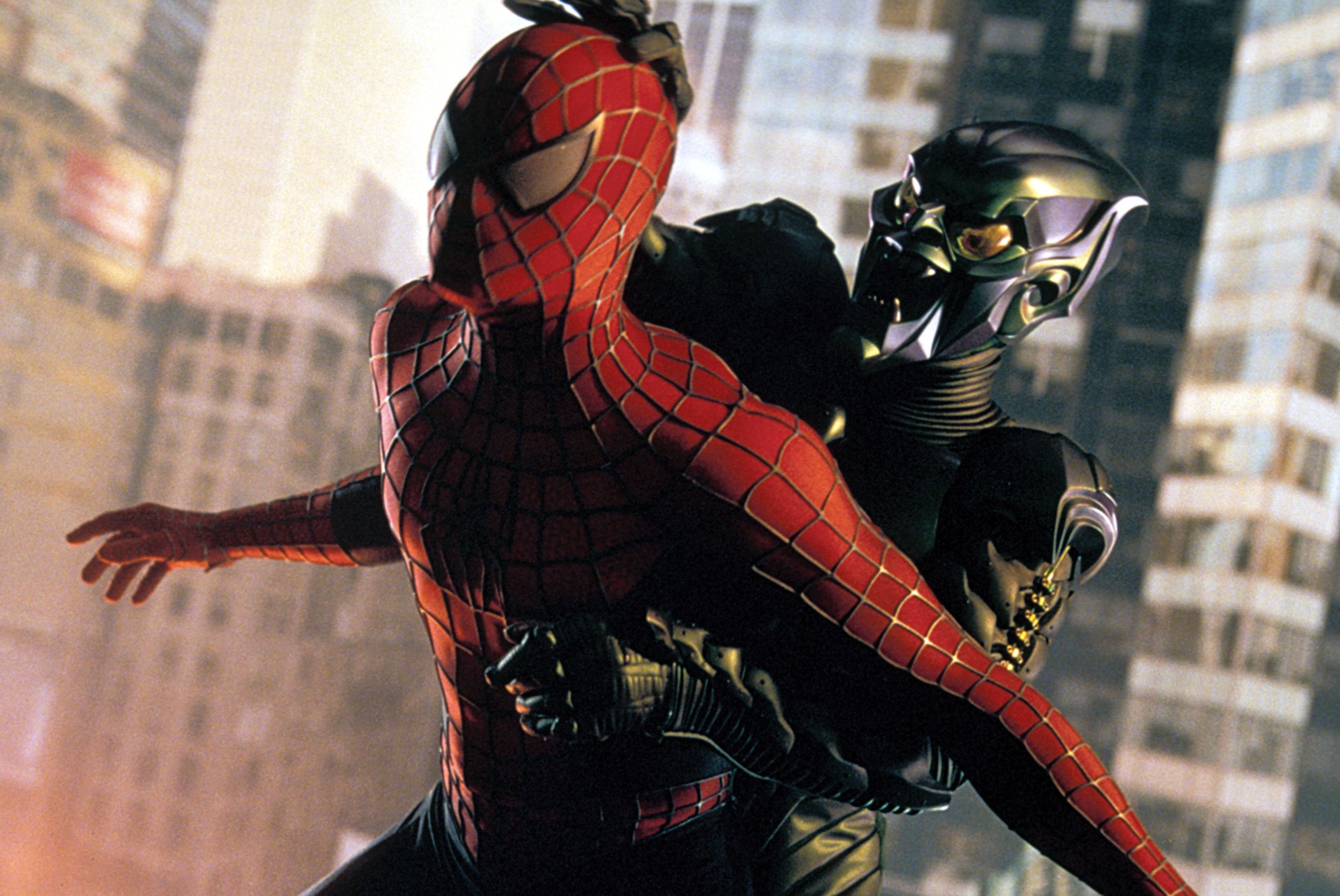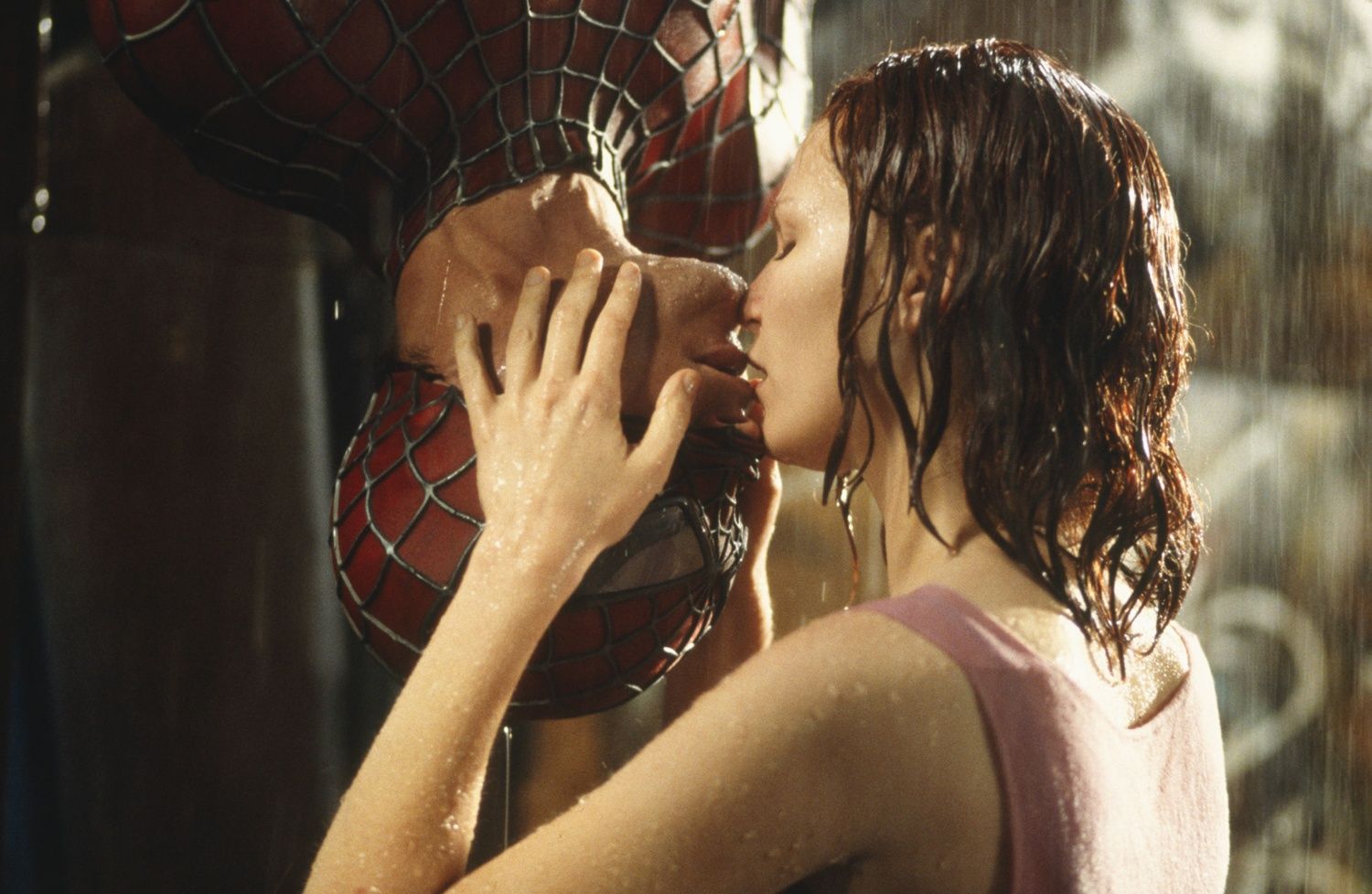It took Hollywood way too long to figure out how to bring Spider-Man to the big screen, but Sony Pictures’ 2002 film Spider-Man was worth the wait. Director Sam Raimi helped Marvel pull off a very entertaining and rewatchable blockbuster that, almost 20 years later, is still one of the best superhero movies ever made.
And it’s easy to relive the spectacle over and over again. As part of the Movies Anywhere ‘Biggest. Offer. Ever.’, for one week only (from April 6th through April 12th), you can purchase from thousands of movies and choose a bonus movie*. So if you purchase Sam Raimi’s Spider-Man, you can choose an eligible bonus movie from a list of Sony Pictures eligible titles: Pompeii, Runaway The Fifth Element, Final Fantasy: The Spirits Within and Battle: Los Angeles.
Fans can credit the staying power of the first Spider-Man movie in part to Raimi’s deft handling of Peter Parker’s origin story; he and screenwriter David Koepp (Jurassic Park) spend significant time grounding the film’s riveting set pieces and then-landmark CG on the backs of a very relatable, and dorky, Peter Parker (Tobey Maguire). From the jump, the filmmakers treat Spidey’s origin story as a character-first drama hiding out inside a four-quadrant summer movie. In doing so, Raimi is able to play all the considerable spectacle and kick-punching at “human height.” That way, every struggle Peter endures or victory he earns feels like one of own. And there are plenty of struggles for Peter and his web-slinging alter ego, starting with the murder of his Uncle Ben (the late Cliff Robertson). Peter’s father figure dies in a robbery gone bad, the perpetrator of which Peter could have stopped earlier but didn’t. The consequence of his inaction haunts the burgeoning superhero as Peter finds himself tangled in a love triangle involving his best friend (and future enemy) Harry Osborne (James Franco) and his childhood crush, Mary Jane Watson (Kirsten Dunst).
Part of Spider-Man’s charm is how much audiences can relate to Peter’s inner life and high school drama. The growing pains of being a teenager are still felt into adulthood; while none of us had to deal with them on top of the side effects of a radioactive spider bite, we can still see ourselves in this kid learning what it takes to be one of the greatest superheroes ever made. So, you know, no pressure.
Making Peter’s life more complicated is that, as soon as he gets his superpowers, he also finds himself the target of a dangerous nemesis to which he has personal ties: Harry’s father, Norman, played by the scary-good Willem Dafoe. Norman’s disturbing transformation into the Green Goblin is one of the most haunting and macabre character arcs in the history of the genre, thanks to Raimi’s dark sense of humor and unique visual flare. The more parts of Norman’s soul he loses to his sinister alter ego, the harder Peter has to fight to preserve his. And the closer Green Goblin gets to hurting Spider-Man literally where he lives, by attacking his friends and Aunt May (Rosemary Harris), the harder it is for Peter to protect the lives of those he loves from all that tries to hurt them.
This conflict creates a constant tension that endears Peter and Spider-Man to audiences in very relatable and heartfelt ways. Raimi tracks the emotional and physical geography of Peter’s arc through an entertaining mix of action and humor. Highlights include a comical montage of New Yorkers’ early reactions to Spider-Man’s crime fighting exploits that mixes “man on the street” interviews with newspaper headlines spinning into view. Raimi loves to indulge in pulp-y visuals like this; he seems to have as much fun doing it as the audience has in watching. Then there’s the unforgettable midpoint set piece where Spidey and Green Goblin first battle it out. Set at a Macy’s-like parade in the middle of town, Goblin rockets in on his glider to wreak havoc as the Webslinger swings and jumps off parade balloons to save as many lives as he can. Raimi excels here at making the action easy to track in concert with raising the emotional stakes.
Our emotional investment in the story peaks when the action takes a very comic book-y turn in a climactic sequence inspired by the Marvel source material. In a breathtaking set piece, the Green Goblin dangles MJ and a cable car full of panicky New Yorkers from the Queensboro Bridge and forces Spider-Man to make a choice: Protect the woman you love or the lives of innocent civilians. Peter can’t save both but, damn it, he’s going to try — because that’s what heroes do. And what he does culminates in the perfect dramatization of the Marvel character’s iconic mantra: “with great power comes great responsibility.” He swings into action, saving both but putting them in greater danger as Green Goblin targets them with his glider and an arsenal of his trademark pumpkin bombs.
This thrilling set piece sets the stage for a tragic ending as Spidey battles Goblin in a violent, disturbing fist fight in an abandoned brick complex. Audiences squirm as their hero’s face gets pummeled and his suit shredded; with each crippling blow reminding us that Spidey is just a teenager. He’s a kid forced to grow up real fast when confronted with another no-win scenario that leads to Green Goblin sacrificing himself on his own petard, er, stabby blade-thing projecting from his glider.
The end of Norman’s life starts Peter down an even harder path, as now a grieving Harry thinks Spidey killed his dad and vows revenge. Moreover, Peter decides that, in order to protect the woman he loves, he has to break her heart — and his. How? By choosing to be friends so that he can try to save her from future enemies. That decision helps further define the hero and endear him to audiences as he makes all the hard choices so that we don’t have to.
That’s another key ingredient to Spider-Man’s enduring legacy: It creates a hero we can’t help but root for or invest in. While most modern comic book movies struggle with that level of character development, Spider-Man effortlessly pulls it off. Which is why its fundamental appeal remains after all these years.
Enjoy this exceptional film at home, and discover another eligible Sony Pictures movie as your bonus, but act quickly, as the Movies Anywhere ‘Biggest. Offer. Ever.’ ends on April 12th.
*LIMITED TIME ONLY. RESTRICTIONS APPLY. Offer expires at 11:59 PM EDT on April 12, 2021. Registration with Movies Anywhere required. Open to U.S. residents 13+. You must purchase a Movies Anywhere-eligible movie from a digital retailer that is linked to your Movies Anywhere account. For complete details, visit MoviesAnywhere.com/bonusoffer.
This article is presented by Movies Anywhere. Movies Anywhere is a trademark of Movies Anywhere, LLC. © 2021 Movies Anywhere.



